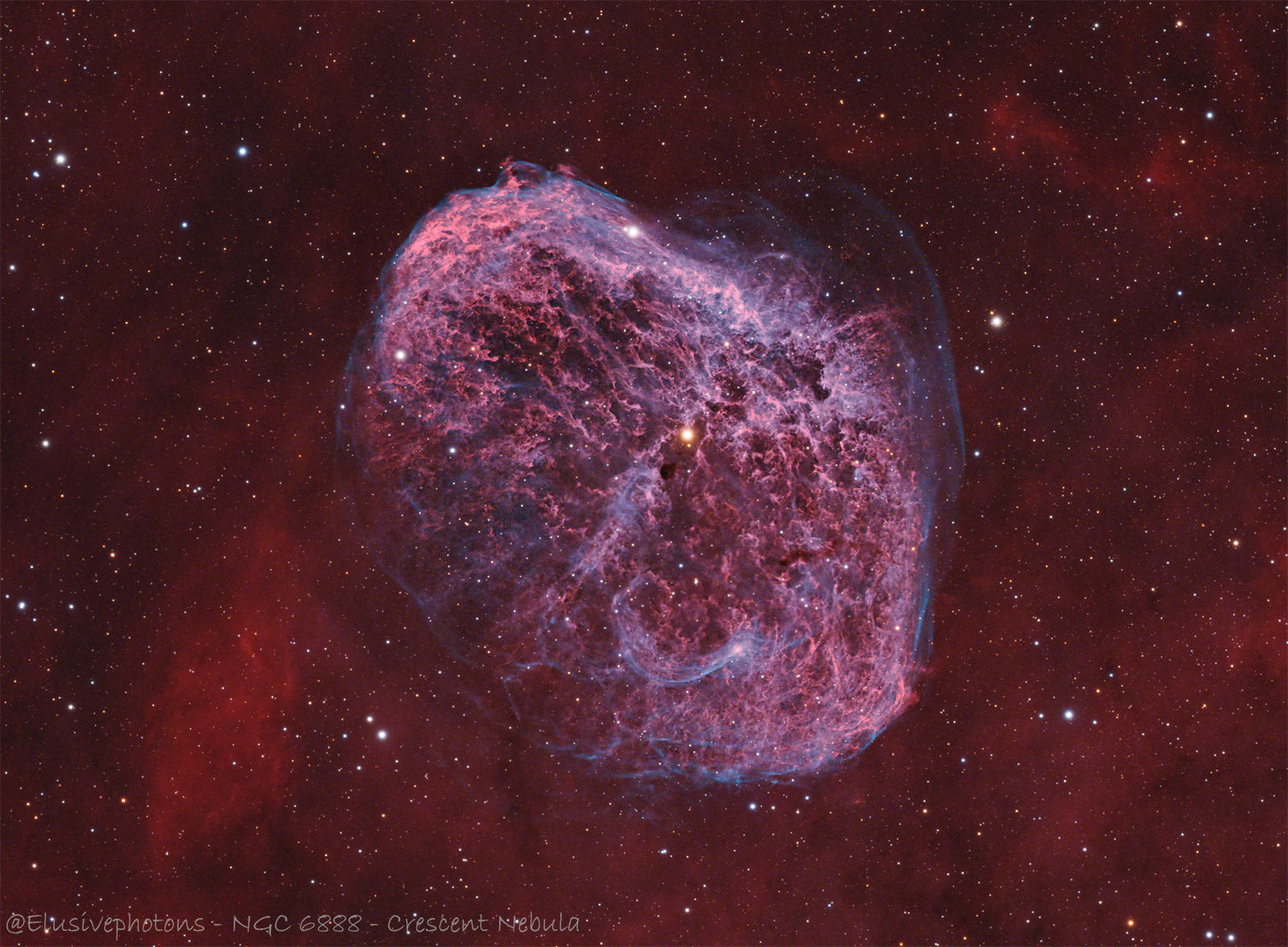Date:
August 8-10th & 31st - 2024
September 1st & 5th-7th - 2024
•
Exposure:
97 x 3 minutes (4hrs 51mins)
247 x 5 minutes (20hrs 35mins)
Total: 25hr 26min
About This Image
Gear:
Telescope: Stellarvue SVX130T-R
Mount: Software Bisque Paramount MX
Camera: Player One Poseidon-C Pro
Filter: Player One Anti-Halo Dual-Band Ha+OIII 2"
Accessories: 3.5" Feathertouch • Stellarvue SFFX2
Guiding: Starfield 50mm Guide Scope • Player One Neptune 664C • PHD2
Software: Photoshop • PixInsight • TheSkyX • Starkeeper Voyager
Description:
NGC 6888, known as the Crescent Nebula, is a celestial spectacle located in the constellation Cygnus, approximately 5,000 light-years from Earth[2][5]. This cosmic bubble, spanning about 25 light-years across, owes its striking appearance to the powerful stellar winds of its central star, WR 136, a massive Wolf-Rayet star that is shedding its outer layers at an astonishing rate[4][6]. The nebula's distinctive crescent shape is the result of a dramatic collision between fast-moving stellar winds and slower-moving material ejected by the star during an earlier phase of its evolution[2][3].
The Crescent Nebula's visual drama is heightened by its complex structure of filaments and wisps, created by the interaction of stellar winds and ejected material[3][4]. At its heart, WR 136 burns at a staggering temperature of nearly 100,000 degrees Fahrenheit, making it one of the hottest known stars in the universe[7]. This intense heat drives stellar winds that race outward at speeds of 2,000 to 3,000 kilometers per second, shaping the nebula and causing it to expand at a rate of 80 kilometers per second[5]. The star is so luminous that it outshines our Sun by a factor of 260,000, despite being only 15 times more massive[5].
One of the most captivating features of NGC 6888 is its striking blue-green shell of doubly ionized oxygen (OIII)[1][3]. This OIII shell, less bright but still quite obvious, surrounds the main nebula and appears as a beautiful blue-green hue in narrowband images[8]. The presence of this OIII shell is particularly intriguing because the oxygen in NGC 6888 is actually underabundant compared to solar values, yet the emission lines of doubly ionized oxygen are incredibly intense[3]. This phenomenon is due to the extreme temperature of WR 136, which produces copious amounts of high-energy ultraviolet light capable of exciting the OIII to emit strongly, creating a stunning visual contrast with the red hydrogen-alpha emissions of the nebula's core[3][6].
Sources:
[1] theskylive.com/sky/deepsky/ngc6888-crescent-nebula-object
[2] en.wikipedia.org/wiki/Crescent_Nebula
[3] www.deepskycorner.ch/obj/ngc6888.en.php
[4] theastroenthusiast.com/ngc-6888-the-crescent-nebula/
[5] theplanets.org/nebula-facts/crescent-nebula/
[6] astrobackyard.com/ngc-6888-crescent-nebula/
[7] astronomy.com/science/crescent-nebula/
Distance: 5,000 light-years
Size: 20 light-years
|



